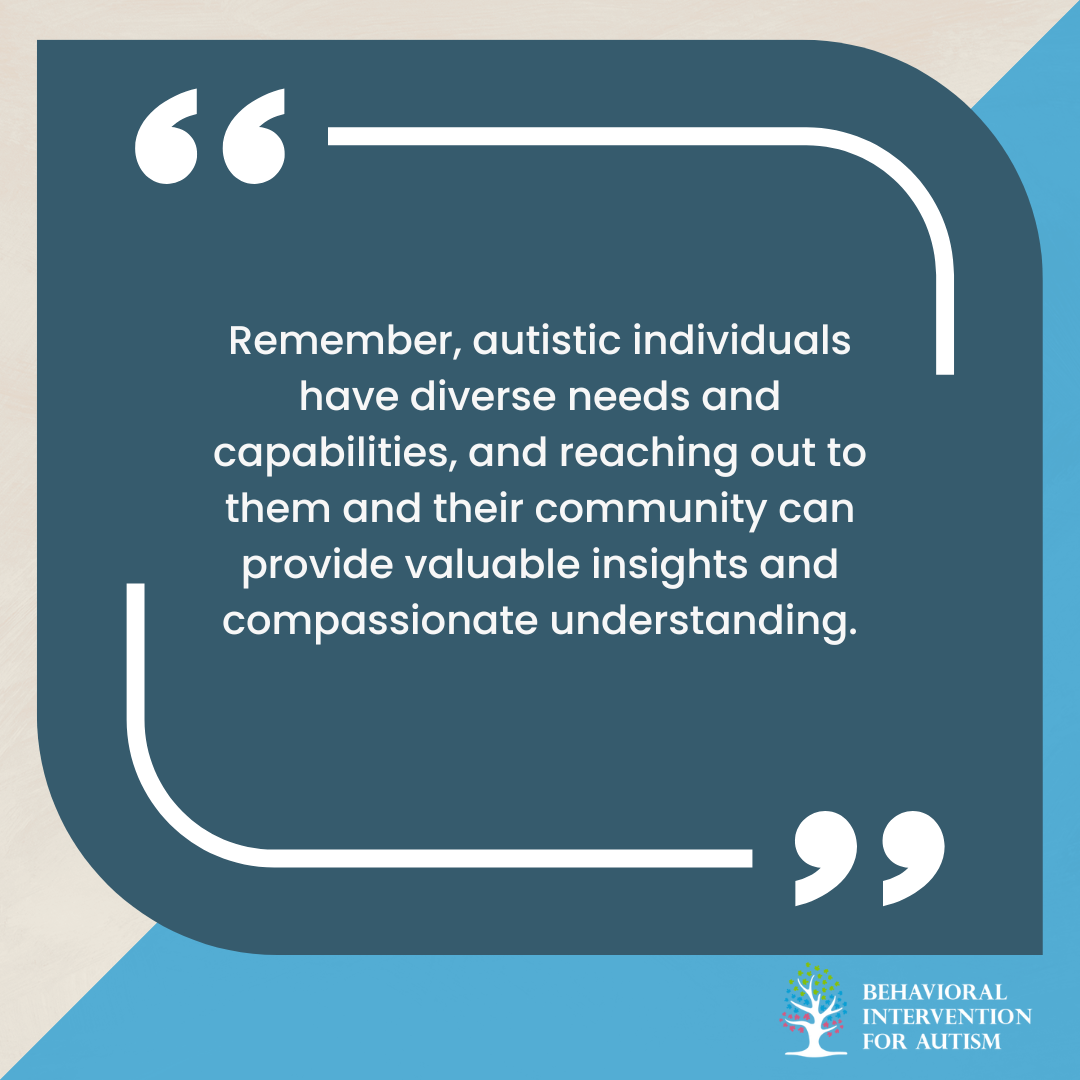
Table of Contents
To effectively care for an autistic child, it is essential to understand their behavior and unique learning styles. Autistic behavior is often a form of communication, and it can be challenging to interpret their intentions and emotions. Studying their behavior patterns allows parents and caregivers, with the assistance of ABA therapy at home, to provide the necessary care and assistance to their children.
Here, we’re going to cover several things that parents and caregivers should NOT do when caring for an autistic child.
Dismiss Communication Cues Through Behavior
Behavior serves as a means of communication for autistic children.
It is important to recognize that actions such as screaming or repetitive movements may convey a message or a need for attention. For example, a scream could be a request for attention or an expression of frustration.
Observing, listening, and understanding their behavior allow parents and caregivers to decipher their intentions and respond appropriately.
Creating an individualized behavior plan can greatly support an autistic child’s development. This plan should be tailored to their needs and focus on reinforcing positive behaviors while addressing any challenging behaviors.
By implementing strategies that promote effective communication through behavior, parents can establish a stronger connection with their children.
Force Learning Styles into Them
Autistic children have unique learning styles that may differ from their siblings or peers. It is crucial to acknowledge and adapt activities to their individual learning styles. Some may excel in visual learning, while others may benefit from hands-on experiences.
By observing their responses and preferences, parents and caregivers can tailor educational activities to suit their child’s learning style and maximize their learning potential.
It is also important to recognize that autistic children may understand what is being said to them even if they can’t speak themselves. Speaking to them with respect and assuming their intelligence can help foster their development and self-esteem. Using simplified language and clear instructions can facilitate comprehension and encourage effective communication.
By understanding their unique learning styles, parents and caregivers can provide the appropriate support and create an environment that promotes growth and development for their autistic child.
Dismiss Effective Communication Strategies
When caring for an autistic child, effective communication strategies play a crucial role in building understanding and fostering a positive environment.
By employing techniques that are tailored to the unique needs of autistic individuals, parents can enhance communication and create a supportive atmosphere.
There are two key strategies to focus on in this case which are as follows:
Simplified Language
When communicating with autistic children, it is best to use simple, direct sentences and avoid using complicated language. This can help them better understand what is being said.
Breaking down information into clear and concise statements allows parents and caregivers to facilitate effective communication. Visual aids such as pictures, symbols, or gestures can also enhance communication. These visual supports can help autistic children to comprehend and follow instructions more easily.
Individual Progress Comparison
When caring for an autistic child, it’s essential to recognize and embrace their unique journey and progress. Each child with autism has their own set of strengths, challenges, and developmental pace. Comparing their progress to that of their peers or neurotypical children can be detrimental and demotivating.
Instead, focus on celebrating and acknowledging the individual achievements and milestones of the autistic child. By setting realistic and personalized goals, parents and caregivers can effectively support their child’s progress.
Remember, progress looks different for each child, and comparing them to others can undermine their self-esteem and hinder their growth.
It is important to remember that while general advice can be helpful, seeking insights from autistic individuals themselves can provide a more comprehensive understanding and compassionate approach toward each unique child. Engaging with autistic adults can offer valuable perspectives and foster a greater understanding of the experiences and needs of autistic children.
Mess with Their Routine
Autistic children often thrive in structured environments with consistent routines. Establishing a stable routine can provide a sense of security and predictability for them.
Maintaining a consistent schedule for daily activities, such as mealtimes, bedtime, and therapy sessions, can help reduce anxiety and meltdowns.
It is important to be flexible within the established routine, as unexpected changes can be challenging for autistic children. If necessary, provide advance notice of any upcoming changes and prepare them for transitions to help ease the transition process.
Compare Them to Their Peers
Comparing autistic children to their peers can be detrimental to their self-esteem and overall well-being.
It’s important to remember that each child develops at their own pace, and milestones may be achieved at different times. As such, parents and caregivers should celebrate each achievement by their children, regardless of when it occurs.
Rather than focusing on comparing their progress to others, it is important to recognize and appreciate the unique strengths and abilities of autistic children. Encouraging their individual growth and celebrating their accomplishments can support their self-confidence and help them develop a positive self-perception.
By prioritizing respectful communication, establishing routine stability, and avoiding peer comparisons, parents and caregivers can create a supportive environment that nurtures the needs of autistic children.
Ignore Non-Verbal Communication
Autistic children may have difficulty with verbal communication, but that does not mean they cannot understand what is being said to them. Many autistic children can comprehend language, even if they cannot express themselves verbally.
Due to this, it is essential to communicate with them in a way that respects their intelligence and capabilities.
When engaging with an autistic child, it’s important to use clear and concise language. Speak in a calm and reassuring tone by using simple and direct sentences. Avoid using complex language, idioms, or metaphors that may confuse them.
Visual aids, such as pictures or gestures, can also enhance their understanding and help bridge the communication gap.
Remember, non-verbal does not mean non-intelligent. Treat autistic children as intelligent individuals who have a unique way of processing and understanding information.
Hand Out Complex Task Instructions
Autistic children may become overwhelmed if given complex or multi-step instructions for tasks. Instead, parents and caregivers should focus on providing simplified task instructions to support their child’s learning and ensure their success.
When assigning a task to an autistic child, break it down into smaller, manageable steps. Clearly explain each step using simple language and visual aids if necessary.
Provide visual cues, such as checklists or diagrams, to help them navigate the task more effectively.
By simplifying instructions, parents can help reduce sensory overload and increase their chances of completing tasks successfully. Remember to be patient and supportive throughout the process, and don’t forget to offer guidance and reassurance as needed.
Additionally, maintaining a consistent routine can also alleviate sensory overload for autistic children. Sudden changes in routine can cause distress and anxiety. Whenever possible, avoid unnecessary disruptions to their established routines, as this can help create a sense of stability and security.
Let Them Think Autism is Bad
One crucial aspect of caring for an autistic child is promoting a positive self-perception. Autistic individuals are not better or worse than neurotypical individuals; they are simply different.
It is important to avoid conveying negative attitudes towards autism and instead emphasize acceptance and understanding.
By celebrating their achievements and focusing on their strengths, we can help build their self-confidence and encourage a healthy self-image. Providing opportunities for them to excel in areas they are passionate about can contribute to a positive sense of self-worth.
Attempt to “Cure” Autism
It is important to recognize that autism is not a disease to be cured. Instead, understand that autism is a neurodevelopmental difference, and attempting to “cure” or change an autistic child can be harmful and even perpetuate a negative self-perception.
Autistic individuals often emphasize the importance of embracing neurodiversity and respecting their unique perspectives. Instead of trying to change the child, focus on understanding and accommodating their needs, provide the necessary support, and promote their overall well-being.
Engaging with autistic adults and seeking their insights can be invaluable in understanding the experiences and needs of autistic children. They can provide first-hand knowledge and guidance based on their lived experiences.
It is essential to approach autism with respect, acceptance, and a commitment to understanding the unique needs of each child.
Blame their Behavior on Autism
Autistic individuals advocate for a compassionate approach that goes beyond discipline and rejection.
Instead of blaming or punishing an autistic child for their behaviors or challenges, parents and caregivers need to foster understanding and acceptance. Autistic people emphasize the significance of seeking insights from autistic individuals themselves, as they have diverse needs and can provide compassionate understanding without resorting to blame or punishment.
By avoiding blame and punishment, parents can create an environment where their child feels supported and valued. This approach allows for open communication, trust, and the development of a positive parent-child relationship.
It is important to remember that each autistic child is unique, and their behaviors should be understood within the context of their individual needs and experiences.
Through engagement with autistic adults and a focus on compassion rather than blame and punishment, parents and caregivers can promote a nurturing environment for their autistic children. This approach not only helps in understanding and meeting their child’s needs but also fosters a positive and loving relationship built on acceptance and support.
Sources:
https://app2vox.com/resources/what-not-to-do-with-an-autistic-child
https://www.autismparentingmagazine.com/what-not-to-do-autistic-child
https://www.speciallearninghouse.com/what-not-to-do-with-an-autistic-child
https://www.spectroomz.com/blog/what-not-to-do-with-an-autistic-child
- How to Get Rid of Autism - April 25, 2024
- Signs My Autistic Child Will Talk - April 24, 2024
- Giftedness and Autism: What You Should Know - April 24, 2024





